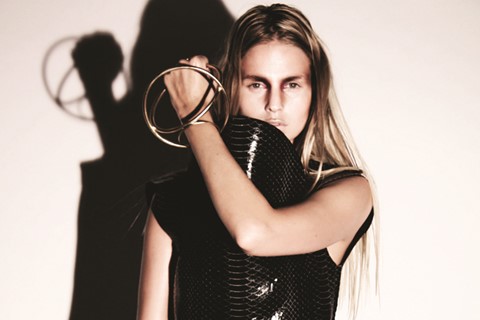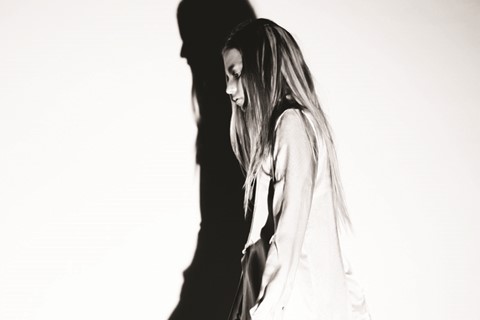"Fashion began when art and dressmaking joined forces. Fundamentally, without art, fashion doesn’t exist," designer Tessa Edwards tells AnOther, still basking in the glow of her S/S12 video presentation during London fashion week...
"Fashion began when art and dressmaking joined forces. Fundamentally, without art, fashion doesn’t exist," designer Tessa Edwards tells AnOther, still basking in the glow of her S/S12 video presentation during London fashion week. Seen here exclusively, the work is a follow up to her A/W11 catwalk that crept through tunnels underneath The Strand – a show that made as much of an impact as NASA's fallen six-ton satellite.
Born in South Africa to Greek Orthodox and Welsh Roman Catholic parents, Edwards moved to the UK – the periphery of London – at a young age. Whilst many designers would be keen to play up the cultural richness of such an upbringing, Tessa takes a left turn and instead draws on the freedom instead it has given her. She is all about left turns: a mind that needs decoding. What you’ll gather from her collection is how Tessa is fascinated by the ancient, mythological, futuristic and the space between things, not things themselves. In many ways, she is to fashion what These New Puritans are to music.
“The cycle of dependency within culture and civilisation is always what this is about for me," Edwards begins. "Namely what always sticks is the feeling of ancient futurism, where this goddess-like woman is a cultural warrior against the demise of integrity! It all sounds pretty epic but it’s how I feel, and I don’t think its too science fiction or out of this world. Some of the best science fiction is based on the idea of ‘man defeats machine after man creates machine’, such as Stanley Kubrick’s 2001: A Space Odyssey, which was a major influence for this particular collection. I do believe that there is a real correlation to our culture today, I feel like we are on the brink of having to defeat our ‘tool/weapons’ and start depending on ourselves again. This idea even comes down to something as irrelevant in the bigger picture as fashion. We paradoxically employ stylists as tools to generate ‘individual style’; we even look to ‘celebrity trends’ for future inspiration, when actually we are destroying the last vestiges of innovation and creativity in fashion and expression through self-image. People need to look from within to create something unique and exciting, because that's where originality begins.”
The recurrent use of circles in Edwards’ work cites the Ouroboros, a snake eating itself. “As Rafiki put it: the circle of life!” she enthuses. “An infinite cycle, it says everything. That is what culture is, consumption into growth into destruction into rebirth. And I love snakes. I was never allowed one.”
The collection features real snakeskin as well as techno serpent PVC fused onto neoprene. Plus silk, leather, metal and Swarovski crystal. Her techniques include laser cutting and hand painting. The S/S12 video you're watching was directed by Edwards herself, featuring two characters – an androgynous youthful self and the present self moving toward and away from each other in orbit.
“The soundtrack was the idea of Mario Athanasiou, who experimented with it during his MA,” Edwards reveals. “The idea was to put microphones on the extremities of a dancer and record the sound of the movement. Everyone was a bit dubious about my idea of strapping microphones to 12-year-old autistic dancer James Hobley, but I had seen him on television – he is so incredible looking and such an amazing dancer I had to make it happen. At times the sound would begin to reverberate and it created something that sounded like an earthquake. When I listened back I was overwhelmed and so elated to use throughout the whole film.”
Text by Dean Mayo Davies


